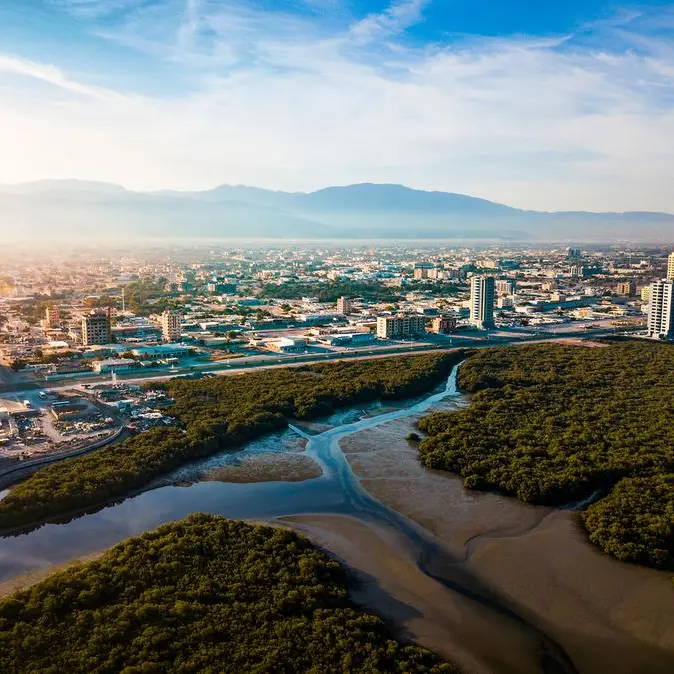01 December 2015
DOHA: With more district cooling projects in the pipeline to meet the growing demands of new development plans in Qatar, the country's district cooling market is worth around QR8bn (about $2.2bn), said a statement issued by Qatar Project Management (QPM) company yesterday.
QPM, which chaired the recently concluded 7th Annual District Cooling Summit in Doha, citing Kahramaa data, said that industry's cooling capacity (measured in tonnes of refrigeration, TR) has expanded significantly in recent years, rising from 25,700 TR in 2007 to around 485,000 TR in 2014, which is expected to rise to 2.4 million TR by 2022.
The company's Corporate Sustainability Director, Salah Nezar, acting as conference chair and moderator of panel discussions, said that the overall results indicate that Qatar plays an eminent role in driving innovation in the district cooling sector.
Nezar recognised the significant impetus placed on sustainability in district cooling by Qatar General Electricity and Water Corporation (Kahramaa) and the authority's leading role in driving positive change in the sector.
He stressed that district cooling is an important technology which is seeing significant evolutions in recent years to deliver greater energy efficiency and reduce the impact on the environment. District cooling is essential to increasing energy efficiency, human well-being and reducing the carbon footprint of our campuses, hospitals, districts, cities and overall countries.
Without district cooling, at least 40 percent of the energy used in cooling through conventional methods is wasted. Trigeneration (combined cooling, heat and power) and renewables including solar energy and bio fuels could further reduce 75 percent primary energy compared to electric district cooling.
District cooling offers its users many advantages including the use of less energy to power a cooling plant than a collective set of standalone air conditioning units in a community or district, all running simultaneously.
The energy savings can be tremendous when district cooling is implemented properly. At 1 TR hour, district cooling consumes around 0.9 kilowatt-hour (KWh), significantly less than the 1.7 KWh used by air-cooled chillers and the 2 KWh needed for window units. Capital costs as in many such projects can be large, but should be considered in a long-term context of energy efficiency, resource utilisation and overall systemic sustainability, said Nezar.
According to official statistics, the equivalent energy demand in 2022 for a conventional air-cooled chiller will be 4,021 MW, whereas the electricity demand for equivalent district cooling will be 2,129 MW -- representing a reduction in peak demand of 1892 MW.
If 2015 figures are an example, this can lead to significant savings and relief for the country's maximum load capacity.
In the region, air conditioning continues to account for significant seasonal consumption and Qatar is a prime example. Kahramaa confirmed recently that the maximum load in summer 2015 was recorded at 7070 MW in August compared with 6740 MW in 2014, an increase of 5 percent year-on- year. The proliferation of district cooling can significantly reduce this annual shift.
District cooling also has numerous environmental benefits including the reduction of carbon dioxide emissions by about 50 percent. District cooling in Qatar is transitioning from the use of potable water for cooling to using treated sewage effluent (TSE) in a bid to reduce the use of desalinated water resources and eventually eliminate them altogether.
TSE is an environmentally friendly alternative, with its overall usage per TR identical to potable water. Existing district cooling plant operators are working with Ashghal for TSE supply connections, while the directives insist on all operators on new sites to be TSE ready for adoption into the future.
DOHA: With more district cooling projects in the pipeline to meet the growing demands of new development plans in Qatar, the country's district cooling market is worth around QR8bn (about $2.2bn), said a statement issued by Qatar Project Management (QPM) company yesterday.
QPM, which chaired the recently concluded 7th Annual District Cooling Summit in Doha, citing Kahramaa data, said that industry's cooling capacity (measured in tonnes of refrigeration, TR) has expanded significantly in recent years, rising from 25,700 TR in 2007 to around 485,000 TR in 2014, which is expected to rise to 2.4 million TR by 2022.
The company's Corporate Sustainability Director, Salah Nezar, acting as conference chair and moderator of panel discussions, said that the overall results indicate that Qatar plays an eminent role in driving innovation in the district cooling sector.
Nezar recognised the significant impetus placed on sustainability in district cooling by Qatar General Electricity and Water Corporation (Kahramaa) and the authority's leading role in driving positive change in the sector.
He stressed that district cooling is an important technology which is seeing significant evolutions in recent years to deliver greater energy efficiency and reduce the impact on the environment. District cooling is essential to increasing energy efficiency, human well-being and reducing the carbon footprint of our campuses, hospitals, districts, cities and overall countries.
Without district cooling, at least 40 percent of the energy used in cooling through conventional methods is wasted. Trigeneration (combined cooling, heat and power) and renewables including solar energy and bio fuels could further reduce 75 percent primary energy compared to electric district cooling.
District cooling offers its users many advantages including the use of less energy to power a cooling plant than a collective set of standalone air conditioning units in a community or district, all running simultaneously.
The energy savings can be tremendous when district cooling is implemented properly. At 1 TR hour, district cooling consumes around 0.9 kilowatt-hour (KWh), significantly less than the 1.7 KWh used by air-cooled chillers and the 2 KWh needed for window units. Capital costs as in many such projects can be large, but should be considered in a long-term context of energy efficiency, resource utilisation and overall systemic sustainability, said Nezar.
According to official statistics, the equivalent energy demand in 2022 for a conventional air-cooled chiller will be 4,021 MW, whereas the electricity demand for equivalent district cooling will be 2,129 MW -- representing a reduction in peak demand of 1892 MW.
If 2015 figures are an example, this can lead to significant savings and relief for the country's maximum load capacity.
In the region, air conditioning continues to account for significant seasonal consumption and Qatar is a prime example. Kahramaa confirmed recently that the maximum load in summer 2015 was recorded at 7070 MW in August compared with 6740 MW in 2014, an increase of 5 percent year-on- year. The proliferation of district cooling can significantly reduce this annual shift.
District cooling also has numerous environmental benefits including the reduction of carbon dioxide emissions by about 50 percent. District cooling in Qatar is transitioning from the use of potable water for cooling to using treated sewage effluent (TSE) in a bid to reduce the use of desalinated water resources and eventually eliminate them altogether.
TSE is an environmentally friendly alternative, with its overall usage per TR identical to potable water. Existing district cooling plant operators are working with Ashghal for TSE supply connections, while the directives insist on all operators on new sites to be TSE ready for adoption into the future.
© The Peninsula 2015











